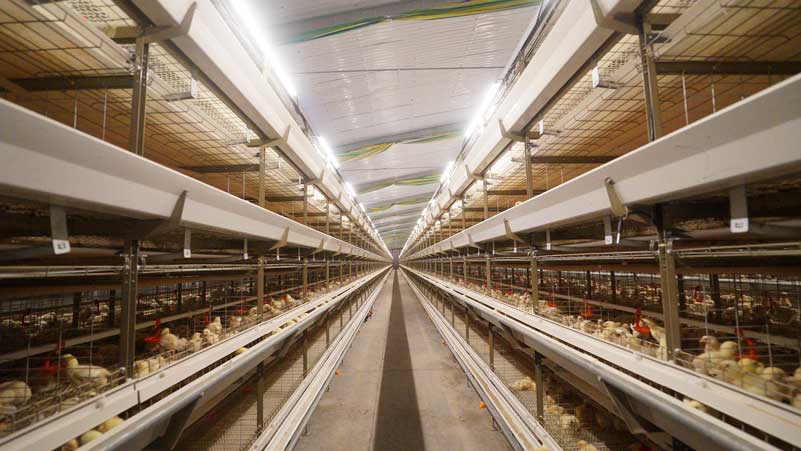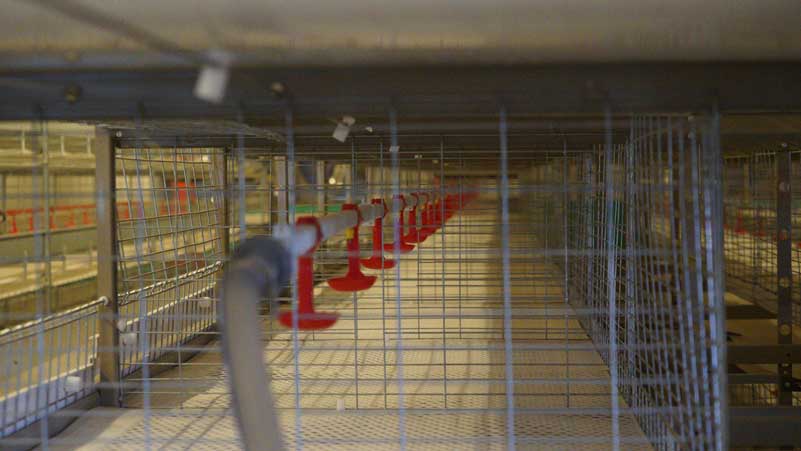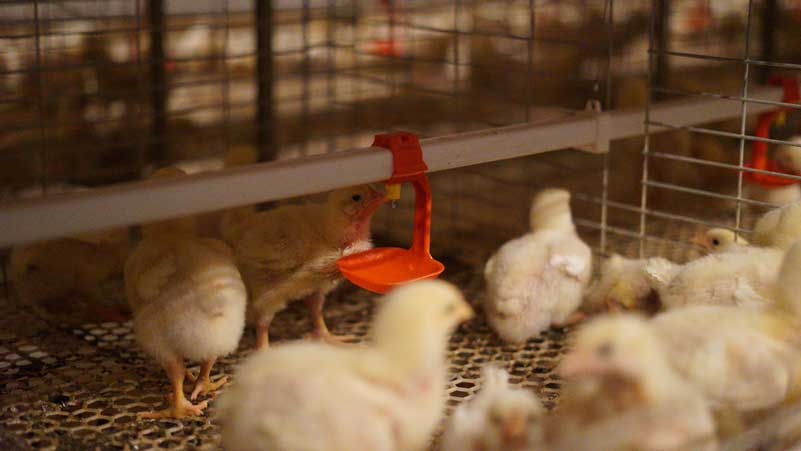When James, a poultry farmer from Nigeria, decided to expand his broiler farm from 5,000 to 20,000 birds, his biggest concern wasn’t just the land or feed—it was how to manage thousands of chickens efficiently without doubling his labor cost.
That’s when he discovered the power of an automatic broiler chicken cage system.
Across Africa, thousands of poultry farmers are now switching from deep litter systems to broiler cage farming because it offers better hygiene, faster growth, and higher profits. But how much does it actually cost, and what makes it so effective? Let’s break it down in detail.

What Is a Broiler Chicken Cage System?
A broiler cage system is a modern housing structure that allows farmers to raise chickens in a controlled, hygienic, and space-efficient environment.
Instead of letting birds roam freely on the floor, broilers are raised inside battery cages made of galvanized steel, with automatic feeding, drinking, and manure removal systems.
Each cage is designed to maximize space usage and airflow while keeping chickens clean and comfortable.
The result: healthier birds, faster weight gain, and higher feed conversion efficiency.
Typical components include:
-
Cage Structure: Multi-tier design made from anti-rust steel wire mesh.
-
Feeding System: Automatic trolley or auger system that delivers feed evenly.
-
Drinking Line: Nipple drinkers to provide clean, constant water supply.
-
Manure Removal System: Belts or scrapers remove waste automatically.
-
Ventilation & Climate Control: Keeps ideal temperature and humidity for growth.
This technology has been especially popular in Nigeria, Kenya, Ghana, Tanzania, and South Africa, where farmers are moving toward large-scale, commercialized poultry operations.

Benefits of Using a Broiler Cage System in Africa
1. Higher Space Utilization
Broiler cages make it possible to raise three to four times more chickens in the same area compared to deep litter systems. This is perfect for African farmers with limited land resources.
2. Better Hygiene and Health Management
Cages separate birds from manure, reducing disease outbreaks like coccidiosis and respiratory infections. Cleaner conditions mean lower mortality and higher productivity.
3. Faster Growth and Uniform Weight
Automatic feeding ensures each chicken receives equal nutrition, which results in more consistent growth and better body weight at the end of each cycle.
4. Labor and Feed Efficiency
Automation reduces manpower requirements by up to 60%. Feed wastage drops significantly since broilers cannot spill or scatter feed on the floor.
5. Quick Return on Investment
Although the system requires initial investment, most farmers recover the cost within 1–1.5 years due to higher production efficiency and reduced operating costs.
Broiler Cage System Price in Africa
The price of a broiler cage system depends on several factors: the capacity (number of birds), level of automation, steel material quality, and cage design (A-type or H-type).
Below is a general price reference for African markets:
| Capacity | Cage Type | Automation | Estimated Cost (USD) |
|---|---|---|---|
| 5,000 birds | H-type, manual feeding | Semi-auto | $6,000 – $10,000 |
| 10,000 birds | H-type with manure removal | Semi-auto | $12,000 – $18,000 |
| 20,000 birds | H-type, full automatic | Feed + manure system | $28,000 – $45,000 |
| 30,000+ birds | H-type, full line automation | Feed + manure + climate | $55,000 – $80,000 |
Example: A client in Kenya installed a 20,000-bird H-type system for $30,000. The farm reduced its labor cost by 65% and reached break-even within 14 months.
How Broiler Cages Improve Profitability
Better feed conversion ratio (FCR):
Broilers in cages use less energy to move and waste less feed, improving FCR by up to 8%.
Lower mortality:
Reduced disease and injury rates mean more birds reach market weight.
Consistent production cycles:
Cage systems allow faster cleaning and disinfection between batches, which helps farmers increase the number of rearing cycles per year.
Market advantage:
Buyers prefer cage-raised broilers because they are cleaner, have uniform weight, and are processed more efficiently.
Installation and Maintenance Tips
-
Site Preparation: Level the ground and ensure proper drainage before installation.
-
Ventilation: Install exhaust fans or curtains for good airflow.
-
Regular Cleaning: Wash and disinfect cages between batches to prevent disease.
-
Motor Inspection: Check feed and manure motors monthly to avoid downtime.
-
Spare Parts: Keep extra drinker nipples, belts, and motors for quick replacement.
With regular care, a high-quality cage system can last up to 20 years with minimal maintenance.
Why Choose LIVI poultry equipment supplier ?
LIVI poultry equipment supplier has over 20 years of poultry equipment manufacturing experience, delivering customized broiler cage systems to African countries such as Nigeria, Ghana, Kenya, Tanzania, Zambia, and South Africa.
We offer:
-
Complete broiler cage design and farm layout planning
-
Automatic feeding, drinking, and manure removal systems
-
Professional installation guidance and after-sales service
-
Factory-direct pricing and fast delivery to all African ports
“From small farms to large commercial projects, we help African farmers grow efficiently with modern poultry solutions.”
How to Get Your Quotation?
Ready to modernize your broiler farm?
Send us your farm size, bird capacity, and level of automation required. Our engineers will prepare a customized layout plan and quotation for your project.
Frequently Asked Questions
Q1. Can broiler cages be used in hot African climates?
Yes. Our systems include ventilation fans, side curtains, and climate controllers suitable for temperatures up to 40°C.
Q2. How long is the lifespan of the cage system?
Hot-dip galvanized cages can last 15–20 years with proper maintenance.
Q3. Can the system run without power?
Semi-automatic versions can. For full automation, we recommend a small generator or solar backup.
Q4. What is the lead time for delivery?
Usually 25–35 days depending on order size and destination port.

